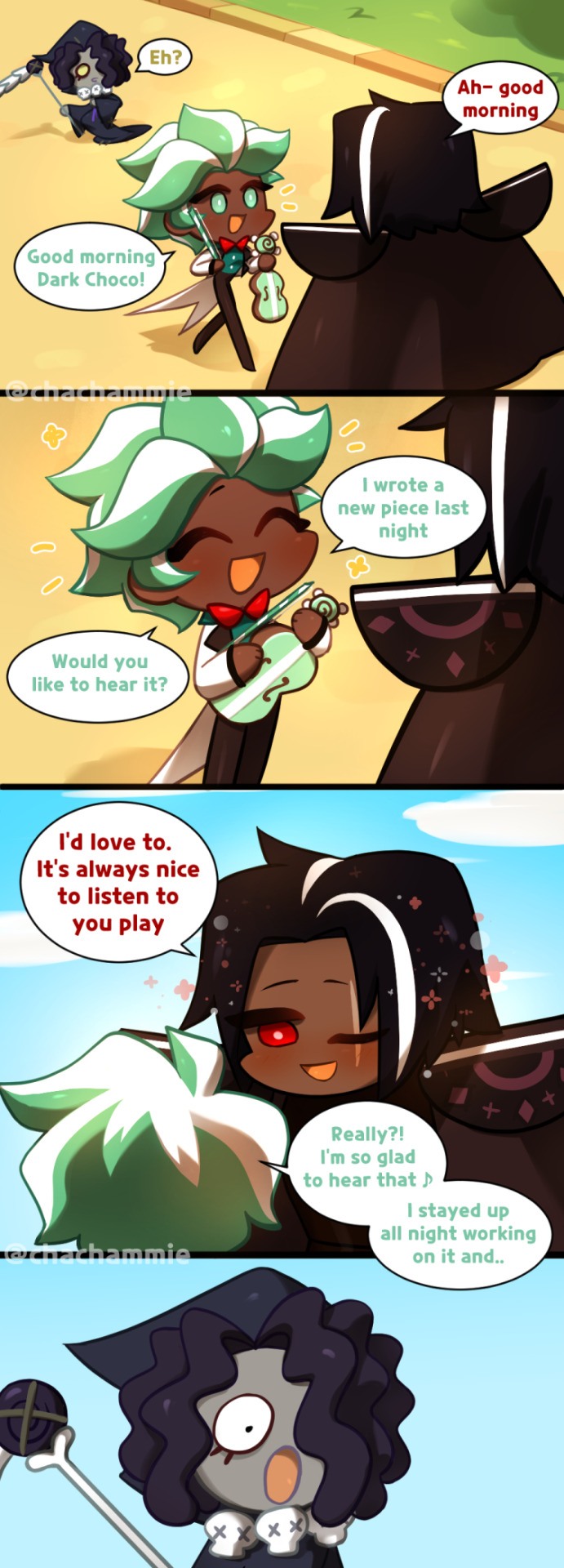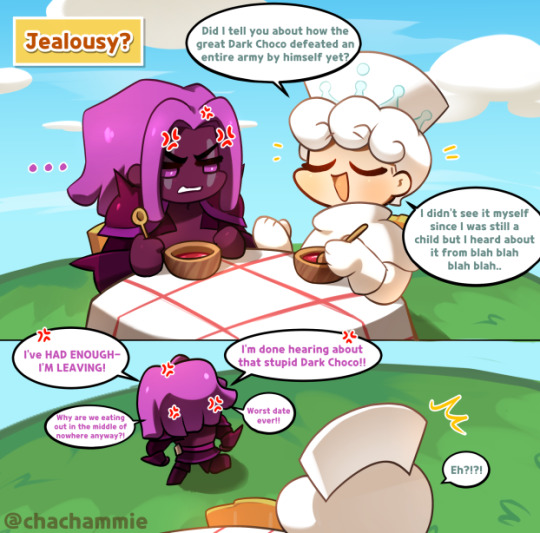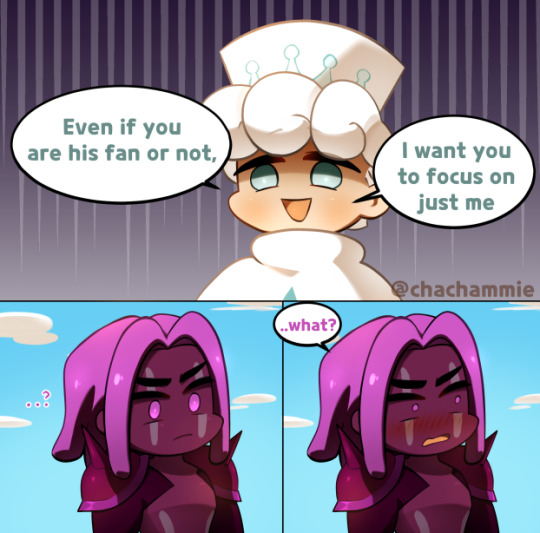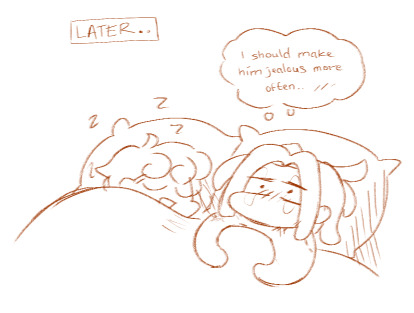#CHANDE DOODLES
Explore tagged Tumblr posts
Note
List 5 things that make you happy, then put this in the ask box of the last ten people who reblogged something from you. Spread the positivity<3
Five things that make me happy are:
Ice cream!
Cute little kitties and doggos
Mindlessly doodling
Interacting with my awesome yaars (be it on Tumblr or irl)
maggie maggie maggie
I am just going to tag them because I am lazy:
@ambidextrousarcher @humapkehaikaun@ur-frndlyneighbourhood-gaykid @palebluemelody @ihatesnitches @chand-si-mehbooba @celestesinsight @tiredandcaffeinated @magic-coffee @beauti-fool-waali-ladki
38 notes
·
View notes
Photo



[Please do not edit or re-post my works anywhere]
the real reason why dark choco is on the villain team TWITTER: @ chachammie
#dark enchantress cookie#pomegranate cookie#dark choco cookie#cookie run#cookie run kingdom#CHANDE DOODLES
3K notes
·
View notes
Text
Dark Choco Cookie doodles

5 notes
·
View notes
Text
Week Two - Overview of VCD History
In this week’s lecture we briefly explored a general overview of the history of visual communication. From the earliest examples of paintings in the caves of Lauscax, France, to some of the technologies we now interact with every day and use to stay in touch with the people we care about.
Dr Chand began with a quote from Jorge Frascara that said “Design is not concerned with objects, but the impact those objects have on people.”. I think this is something really important that is never said enough. The convoluted history of the word “design” has led to create a misconception among most people that design is just a facade, something pretty done at the end of making a product.
Alice Rawsthorne’s book “Hello World” explores the history of the word design and how it came to be understood as it is today.
The world needs to change the way we define design. As designers, we need to change the image of design itself to be more inclusive of how it works in the aid of people.
Exploring the early history of visual communication really puts into perspective the whole timescale and how long it has taken for things to organically develop and evolve. It is also fascinating to look how the meaning and use of visual communication has changed throughout this time.
The drawings on the caves of Lauscax were created out of necessity. For survival, utilitarian and ritualistic purposes. The dominance of animals throughout these works shows us their significance in the culture at that time. We also see the first signs of displaying movement through art and a very basic representation of the human form, potentially forming instructions or a guide for rituals. There are similar examples a little more locally in Australia, with some pieces in Pilbara dating back up to 30,000 years.
We’ve seen that humans love to make their mark and this is something that has stayed with us for many thousands of years. Whether it be initials carved into a tree or simple doodles in the back of a book, we all have an urge to leave a little part of our history behind.
Sumerian Cuneiform script, the earliest form of language is an amazing indicator of how we as humans developed new ways to communicate. Originally comprised of pictorials, the language formed to use characters closer to how we know them today. We see the shift from the use of images and pictorials to language as the main method for written communication. From Sumerian Cuneiform script grew Ancient Egyptian hieroglyphics. The Rosetta Stone, created in 196 BC is an excellent and intriguing example of how language has evolved and is the key to understanding ancient languages.
From pictorials we see the emergence of some of the first logo types, seen in Roman amphora marks. These are a combination of image and type created to provide a product description and display the producer’s name. This is the first example of packaging design in the modern sense.
The Roman Empire later used logo types in a similar fashion to create an identity for the Roman Republic Government. SPQR was instantly recognisable for the city over 2000 years ago and can still be seen around Rome inscribed in public infrastructure.
We also see these images used to aid in transcending language barriers. In Pompeii’s prostitution trade there was often a list of services with images or diagrams panted on the walls of brothels, allowing clients to simply point to their preference.
The Guttenberg Press, created in 1456 as modification of a wine press was a major stepping stone in the journey of visual communication. Johann Guttenberg created 180 copies of the first printed book: a Bible.
This idea of movable text meant that books could be printed quickly and spread through society. Common people were now able to access vast amounts of information with great ease. Prior to this, most people were illiterate. The power of reading and sharing knowledge allowed readers to make more informed decisions in their lives which later led to the Renaissance.
Albrecht Pfister was the first to use woodcut illustrations alongside type. This opened up a new world of visual communication. The inclusion of images not only enhanced storytelling but helped aid the process of understanding and learning the language. The Book of Kelly’s was one of the most significant developments in 800AD, containing the four gospels of the New Testament with illustrations.
We see further development on the idea of logo types in the 15th century with printers marks being used as identifiers. This further evolves with the rise of trade and mass movements of goods in the 1820s. Branding and trademarks became a tool to distinguish companies from their competitors and also as an indicator of quality.
The 19th and 20th centuries saw the development of industry and commerce leading to the creation of the first formal company logos and branding used for identity. Around this time we see exponential development of visual communication. The creation of standardised assets like typefaces increased rapidly. Helvetica, created in 1957, quickly became one of the most widely used typefaces and is still relevant today. We see the rise of prolific designers like Paul Rand creating visual identities for large companies such as IBM, UPS, Westinghouse and NeXT.
The release of Apple’s Macintosh computer in 1984 brought affordable desktop publishing to the masses. Applications like the included MacWrite and PageMaker were among the first WYSIWYG interfaces, enabling the combination of images and text. These interfaces have become commonplace in todays digital society.
With the emergence of smartphones in 2007 and wireless communication technologies like 3G/4G in succeeding years, media quickly became accessible anywhere, anytime. Social media applications meant people could stay connected to the people they care about constantly and share rich forms of media like photo and video rapidly. Other mobile devices including tablets and e-readers created new platforms for designers to create experiences for.
Virtual and Augmented reality are both currently emerging as new ways to interact with our environment. Games like Pokemon Go have brought the concept to the masses in an easy to use package.
From here designers face a number of emerging ideas and challenges. We see usability and interaction becoming more and more relevant as the designers place more emphasis on experience rather than just purely visual design.
0 notes
Text
Google remembers Mohammed Rafi on 93rd birthday
Google on Sunday celebrates the 93rd birthday of legendary playback singer, Mohammed Rafi with a specially-curated doodle.
Born on December 24, 1924 in Punjab, Rafi is remembered as one of the most versatile singers of India, as his songs ranged from classical numbers to patriotic songs, sad lamentations to highly romantic numbers, qawwalis to ghazals and bhajans.
Further, Rafi is known for his ability to mould his voice to the persona of the actor, lip-syncing the song on screen in the movie.Rafi is primarily noted for his songs in Hindi, over which he had a strong command.
He sang around 7,405 songs in many languages.
He sang in other Indian languages including Konkani, Bhojpuri, Odia, Punjabi, Bengali, Marathi, Sindhi, Kannada, Gujarati, Telugu, Magahi, Maithili and Urdu.Apart from Indian languages, he also sang songs in English, Farsi, Arabic, Sinhalese, Creole and Dutch.
Among his noteworthy numbers include "Chaudhvin Ka Chand Ho", "Baharo Phool Barsao", "Kya Hua Tera Wada" and others.
Mohammed Rafi died at the age of 55 on 31 July 1980 in Mumbai, following a massive heart attack.Rafi has six Filmfare Awards and one National Film Award to his kitty.
In 1967, he was also honoured with the Padma Shri award by the Government of India.
]]>
0 notes
Photo


[Please do not edit or re-post my works anywhere]
you can smile again ♪ TWITTER: @ chachammie
#dark choco cookie#licorice cookie#mint choco cookie#cookie run#cookierunkingdom#darkmint#gingerbrave#strawberry cookie#CHANDE DOODLES
2K notes
·
View notes
Photo


[Please do not edit or re-post my works anywhere]
how they handle valentine’s day gifts
TWITTER: @ chachammie
#madeline cookie#espresso cookie#milk cookie#purple yam cookie#milkyam#espresseline#cookie run#cookierunkingdom#CHANDE DOODLES
1K notes
·
View notes
Photo





[Please do not edit or re-post my works anywhere]
milkyam date BONUS:

TWITTER: @ chachammie
705 notes
·
View notes
Photo

[Please do not edit or re-post my works anywhere]
hxh quote except espresso still hates him
TWITTER: @ chachammie
835 notes
·
View notes
Photo


[Please do not edit or re-post my works anywhere]
lil doodle TWITTER: @ chachammie
#dark choco cookie#mint choco cookie#cookierunkingdom#cookie run#darkmint#CHANDE DOODLES#i tried to draw in crk style but my style shows too much
403 notes
·
View notes
Photo


[Please do not edit or re-post my works anywhere]
it felt like them
TWITTER: @ chachammie
#licorice cookie#pomegranate cookie#poison mushroom cookie#dark choco cookie#cookie run#cookierunkingdom#CHANDE DOODLES#sorry i have an art block
830 notes
·
View notes
Photo

[Please do not edit or re-post my works anywhere]
working hard
Based off of this: twitter(dot)com/seonahro/status/1361452024143880192
TWITTER: @ chachammie
#pomegrante cookie#licorice cookie#poison mushroom cookie#cookie run#cookierunkingdom#CHANDE DOODLES
660 notes
·
View notes
Photo

[Please do not edit or re-post my works anywhere]
the moment i found out mint choco is a support type.. TWITTER: @ chachammie
#purple yam cookie#dark choco cookie#mint choco cookie#cookie run#cookie run kingdom#darkmint#CHANDE DOODLES
893 notes
·
View notes
Photo



[Please do not edit or re-post my works anywhere]
i made an analysis of darkmint for fun!! i hope you enjoy reading it or had a laugh TWITTER: @ chachammie
724 notes
·
View notes
Photo

[Please do not edit or re-post my works anywhere]
made a quick comic to show how much i hated 7-25 and custard 💀 TWITTER: @ chachammie
#licorice cookie#custard cookie#cookie run#cookie run kingdom#espresso cookie#madeline cookie#pomegranate cookie#CHANDE DOODLES
864 notes
·
View notes
Photo

[Please do not edit or re-post my works anywhere]
I love it when mint looks at the camera like in the office TWITTER: @ chachammie
660 notes
·
View notes